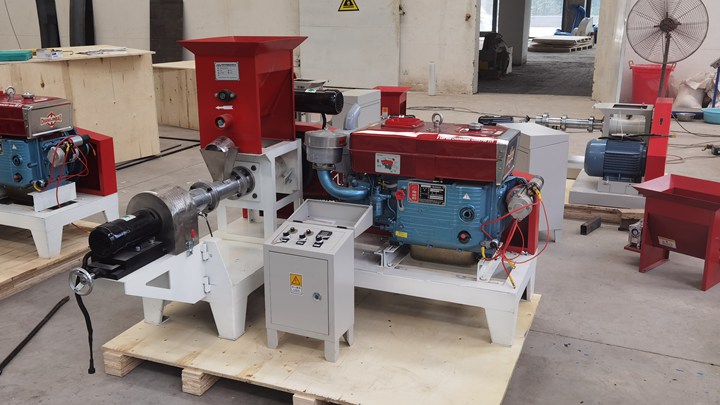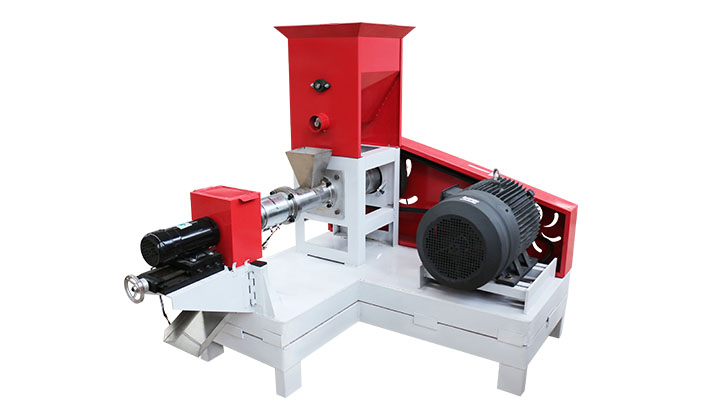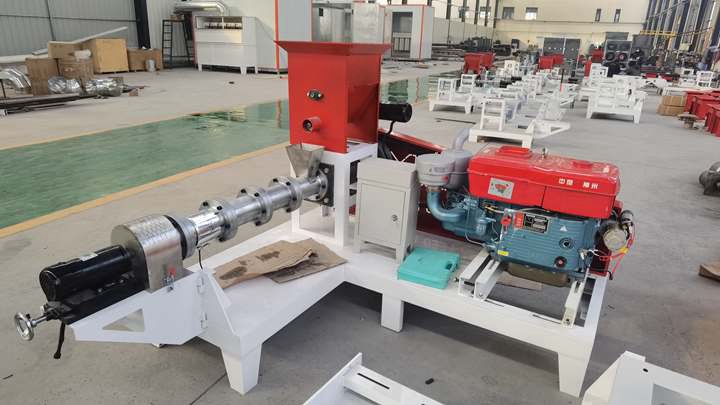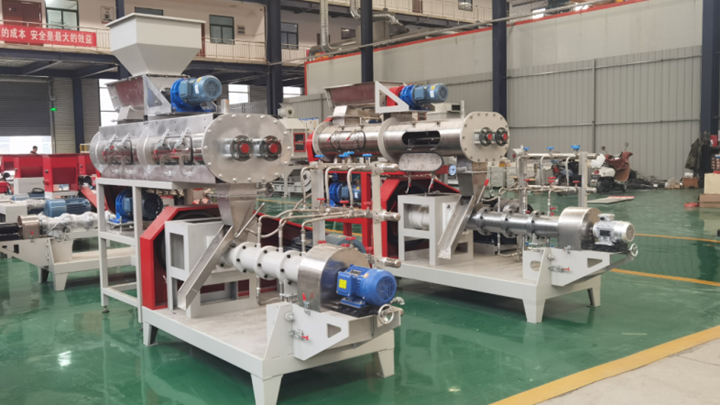Catfish feed production line for commercial use in Uganda
-

Catfish Feed Production Process – Fish Feed Extruder Machine
Catfish fry in hatcheries are fed finely ground diets or flour-based feeds containing 45-50% protein. Once the fish are in the pond, they are usually fed a diet containing about 40 percent protein. Some producers feed “fish” with 28 or 32 percent protein, and the food fish grow until they grow to 1-2 inches.
Get Price -
.jpg)
Nutrition, Feeds, and Feeding - Mississippi State University
Jun 22, 2022 · Fat levels in commercial catfish feeds rarely exceed 5-6 percent. About 3-4 percent of the fat is inherent in the feed ingredients, with the remaining 1-2 percent being sprayed onto the finished pellets mainly to reduce feed dust or “fines,” but also to supply some energy and essential fatty acids.
Get Price -
.jpg)
CATFISH FARMING: Production of commercial catfish - Blogger
Jul 03, 2011 · Production of commercial catfish. The normal production cycle for channel catfish farming starts with the parent fish breeding. Conservation starts in the spring when water temperatures rose to above 70 º F. At that time, the parent fish was held in the pool at random pairs and fertilized eggs collected from breeding containers and transferred
Get Price -
.jpg)
Costly fish feeds sinks farmers in huge losses | Monitor
Aug 04, 2020 · The average cost of a kilogramme of fish feed is Shs3,800. At eight months when fish harvesting begins, fish in a pond will have fed on at least 650 gms to 750 gms of food. A tilapia will be
Get Price -

FOR COMMERCIAL CATFISH HATCHERY OPERATORS
A major obstacle to increasing farmed catfish production in Uganda is absence of starter feed in commercial catfish hatcheries. Three days after hatching, catfish larvae andfry feed onlive feed in form ofsmall (microscopic) water fleas (Moina). Catfish hatcheries generally lack technologies for producing live feed.
Get Price -

Catfish - NARO
Farming. Crops. Apples; Cocoa; Coffee; Maize; See All; Fish Farming. Nile Perch; Tilapia; Silver Fish (Mukene) Catfish; See All; Forestry. Bamboo; Eucalyptus; Pine
Get Price -
.jpg)
Catfish Feed Production Process, Making Technology
Catfish feed production method: Weigh all feed stuffs – fully grinding all raw materials via fish feed grinder machine– pass through 50 mesh for screening – mixing – extrusion. Notice: 1. All feed stuffs should be cleaned before grinding, if not, impurities of feed stuffs would lower catfish feed quality and even damage the fish feed machine. 2.
Get Price -

Fish Farming in Uganda | Fortune Of Africa – Uganda
Fish Farming in Uganda. Uganda produces up to 15 000 tonnes of fish from aquaculture, including production from small-scale fish farmers, emerging commercial fish farmers and stocked community water reservoirs and minor lakes. There are an estimated 20 000 ponds throughout the country with an average surface area of 500 m² per pond.
Get Price -

North African catfish - Feeds and feed ingredients
However, many farmers use moist ingredients such as chicken offal as a stand-alone feed and claim to achieve FCRs of around 1.3:1 (Ayinla, 2007). However, recent trials in Uganda have found that the use of chicken offal results in unacceptably high abdominal fat deposition (Matsiko and Mwanj, 2008).
Get Price -

Feeding catfish in commercial ponds - Latest News
Since multiple harvest (or topping) is the most common production scheme in commercial catfish production, the size of catfish in a pond at any given time may vary from 4 inches to above 2 pounds. Since it is not practical on a large-scale, daily basis to feed multiple feed sizes, most farmers compromise by feeding a 5/32- to 3/16-inch diameter
Get Price -

Fish Feed Pellet Machine Catfish Feed Production Process
Sep 15, 2020 · Fish feed pellet machine is the indispensable equipment to make catfish feed pellets. Catfish feed is mainly plant based, but fry and small fry feed contains some fish meal and other animal protein. The main ingredients used in catfish feed usually include soybean meal, cottonseed meal, corn and by-products, and wheat by-products.
Get Price -
Catfish Farming – Freshwater Aquaculture - Extension
Aug 26, 2019 · Catfish is the “king” of U.S. aquaculture in terms of pounds produced and total value. The majority of catfish production occurs in the South, in the states of Mississippi, Alabama, and Arkansas. This southern delicacy is raised in earthen ponds filled with well water and fed a floating, grain-based diet. Catfish has a mild flavor and is
Get Price -
(PDF) Manual for the Commercial Pond Production of the
Jan 01, 2009 · Use of recirculating aquaculture systems (RAS) to grow fish is on the rise. Fish feed typically contains 25–60% protein and is the only significant input in RAS. Fish recover 20–30% of the
Get Price -
.jpg)
Catfish Production in Uganda - Markets, Suppliers and Exporters
Find 2022 market trends for Uganda Catfish including production suppliers and exports. Get valuable market insights.
Get Price -

Catfish Feeds and Feeding - Mississippi State University
A typical catfish feed contains 25 percent or more of digestible carbohydrates. Lipid levels in commercial catfish feeds rarely exceed 5-6 percent. About 3-4 percent of the lipid is inherent in the feed ingredients, with the remaining 1-2 percent being sprayed onto the finished pellets to reduce feed “fines”.
Get Price